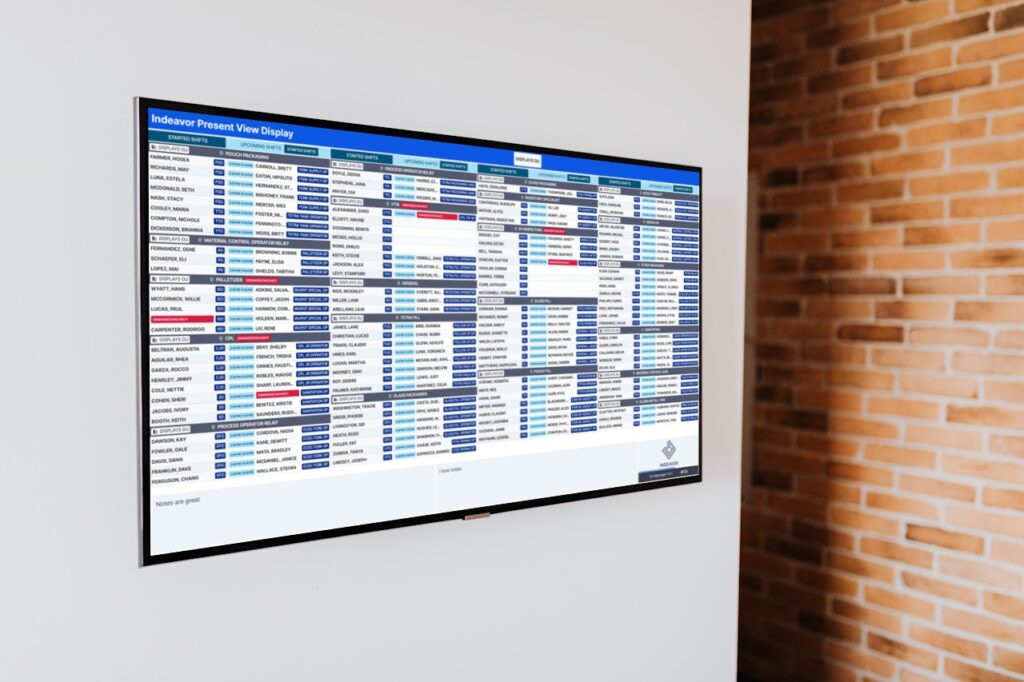Introduction / Some Context
HCM (Human Capital Management) and WFM (Workforce Management) solutions have, of course, evolved quite significantly from the days of mostly automating and auditing core processes. Indeed, the cycle of greater sophistication has, for example, extended beyond impactful reporting, analytics, and even planning capabilities to also seeing solution vendors focus much more heavily on the quality of the end user experience, as well as the ability to deliver truly strategic business outcomes. The latter naturally includes improved employee productivity and reduced turnover, where even modest progress in either can translate into major business value.
Jumping further to many of today’s HCM and WFM product vendors and what some might view as their steady stream of announcements about “enhanced capabilities” in many areas of the solution, we’re witnessing various (although not always totally proven) AI-powered features designed to be relevant to both the operating environment and the individual user. Nonetheless, when discussions or even market buzz percolates around new HCM / WFM product capabilities, the operative phrase is typically “exciting new features.”
That said, anyone very familiar with HR Technology offerings also knows the importance of key design elements like database architecture, data model extensibility, security considerations, and the ubiquitous notion of “tech stack” (which includes third-party integrations). And as mentioned, increasingly viewed among the most critical lenses when evaluating solutions: the User Experience or UX. This is, of course, because the UX drives broad-based adoption, including across diverse stakeholder groups, as well as the type of usage that leads to better ROI on the technology asset and investment. This is true whether the solution is an HCM suite supporting the complete HR process and employee life cycle or representing an HCM solution category such as Workforce Management, ideally including robust scheduling capabilities. The salient point here is that system usability is not a feature.
Based on my over three decades of operating in high-profile roles on all sides of the HR Tech / HCM value chain, and doing so globally, a useful rule of thumb to keep in mind is that many if not most new features … even the most impressive ones that we might see accompanied by ample fanfare … might take just 6-8 weeks to develop, test and bring to market. This is due to today’s major advances in enterprise software development and release management. On the other hand, with such product undertakings as building or integrating an adjacent module of many new functionalities, this can often take 9-12 months to launch, just with beta or pilot customers. But still, the discussion here has (so far) principally revolved around features, not what I refer to as “foundational platform attributes”, which is where I place the notion of usability, for example.
A platform attributes framework that has served me (and my employers and clients) well in the last few decades was created around four HCM / WFM solution dimensions: Interoperability, Configurability, Usability, and Scalability. And here is one fairly important point or premise that my teams were always asked to keep front and center: If a platform attribute such as usability is a ‘4’ on a ‘10’ scale, it’s likely not going to be an 8 or 9 for several years, if ever. So, let’s now dive more deeply into these platform attributes so that an organization evaluating HCM/ WFM solutions might have some standard, practical lenses they can apply.
Core HCM/WFM Platform Attributes
Interoperability … I recall a Sapient Insights Group survey some years back finding the average organization uses around 16 HR technology solutions or tools. Other industry research sources, like Josh Bersin, have more recently reported that large, likely global companies often use 80 or more HR-related technology applications. For some definitional grounding here, software interoperability generally refers to the ability of disparate software systems and applications to seamlessly communicate, share, and use data and surrounding services or functions with each other. It also means that different systems can work well together within the context of unified workflows and even more complex analytics, planning, and modeling frameworks.
Configurability … relates to the degree to which system functions and usage can be shaped to customer specifications, often with minimal or even no programming skills required. This type of obviously high-impact (and cost management) capability might involve customer-specific data fields, web pages, and other graphical displays, business rules or policy-driven workflows, the governance and management of different system integrations, the ability to readily scale up or down in terms of system resources being used, and localization capabilities across the entire spectrum of system functionality.
Usability … usability is the HCM/WFM platform attribute that is key to meeting a wide range of stakeholders and their often correspondingly diverse business needs. As it relates to a Workforce Management System, this might pertain to forecasting and scheduling the workforce … or assigning jobs, tasks and shifts in a more visual, graphical and logical experience, one that is more familiar or intuitive, perhaps also more personalized or role-based, and also without the need to spend much time at all in learning mode in order to realize the benefits of the solution.
Scalability … again using a WFM solution as a reference point, a key aspect of scalability might pertain to operational scalability or the platform’s ability to handle increased scheduling, demand forecasting, and shift allocation (and the related complexity) without a proportionate rise in any dependency on business area staff or the end-user community. Another often-applied scalability lens is the size of the workforce being managed and how readily the system can scale up or down in terms of employee (and contractor or contingent) headcount in scope … especially without a noticeable degradation in usability or response time, or excessive computing resources being used given workforce size. This becomes an even more important consideration when a business is acquiring, merging, or divesting, because of the unpredictable nature of these activities.
My Conversation with a Particular WFM Solution Vendor, Indeavor
The last section of this blog is a partial recap of an “industry analyst conversation” I had with a multi-country WFM software vendor, a chat I found to be informative if not illuminating. This “People Operations Platform” company, as they refer to themselves, happens to be a solution provider that has evidently crafted their product differentiation around the notion of foundational platform attributes being the key to maximizing customer business value, … vs. simply “modern features”, which, btw, were also evident in abundance. This forward-thinking WFM tech vendor is Indeavor, a solution essentially used every day by over 150,000 employees and their managers across customers around the globe, and all benefiting from this design perspective and philosophy. Moreover, the platform is available in over a dozen user experience languages.
As for my discussion with leadership at Indeavor, and specifically with respect to the first platform attribute above, the one where ‘TCO’ (total cost of ownership) is typically most closely linked (interoperability), the solution readily handles system, data, and even business rule interoperability (aka integrations) across ERP, HRIS, T&A, and Payroll. Moreover, beyond typically available demographics and leave balances, the scope of the company’s “system interoperability prowess” extends to workforce skills, demand imports, qualifications, and time-tracking. Using simpler terms and a straightforward business scenario, consider the business that manages production demands in a system other than Indeavor. All the key information mentioned would still readily and directly be imported into Indeavor’s WFM platform without any need for data conversions. This ensures labor planning is aligned with production needs, creating a direct connection between labor demand and staffing … which usually results in:
(1) more accurate and reliable scheduling
(2) greater flexibility to adjust planning and scheduling as demand fluctuates, and
(3) the ability to share labor across business areas, departments, work teams, and people managers for maximum efficiency.
And the company also does what is now considered an industry standard from an integrations standpoint, i.e., they maintain an extensive library of pre-built integrations with common third-party systems that are most relevant for WFM solutions.
Additionally, in terms of how the critical platform attribute of interoperability applies to what most view as the primary mission of these mission-critical tools, or scheduling, let’s realize that less complex operations can often get by with much simpler scheduling tools. Indeavor’s apparent sweet spot is large organizations in manufacturing, oil & gas, government agencies, life sciences/ healthcare, automotive, and other industries where workforce scale and around-the-clock operations make scheduling both critical and highly challenging. The WFM solution provider’s advanced schedule automation rules are combined with both policy harmonization and centralized workflow management.
My conversation with the Indeavor management team wrapped up by touching upon the universal concern of all customers — of frankly all technology offerings — usability. An illustrative example is the system’s digital display (below) that fully replaces outdated paper or spreadsheet-based processes. These provide real-time visibility into schedules directly within the shop floor environment and are accessible to all managers and employees, with updates happening in real time!

Concluding Comment
I will end this blog with the assertion that a Workforce Management or People Operations Platform designed for what may well be the most complex industry market segments, as well as company profiles — global manufacturers — should logically be able to handle the complexity of any other market segment or industry as well. I’ll leave that to the team there to determine the timing around potentially executing that type of broader product GTM strategy, if indeed it’s determined to be optimal for the business––and its apparently very loyal customers.
About the Author
Steve Goldberg has operated in senior roles on all sides of HR, Payroll, Talent Management, and HR Tech for over three decades and on three continents. After 15 years as a practitioner exec in Fortune 500s, Steve led HCM product strategy at PeopleSoft as well as research practices at Bersin and Ventana Research before co-founding Recruiting Tech and Change Management firms. Currently serving as an independent industry analyst and advisor, Steve has been recognized as a Top 100 HR Tech Influencer multiple times, partly due to his focus on elevating org agility and other strategic HCM outcomes in talks and articles throughout the year. He holds an MBA in HR.




